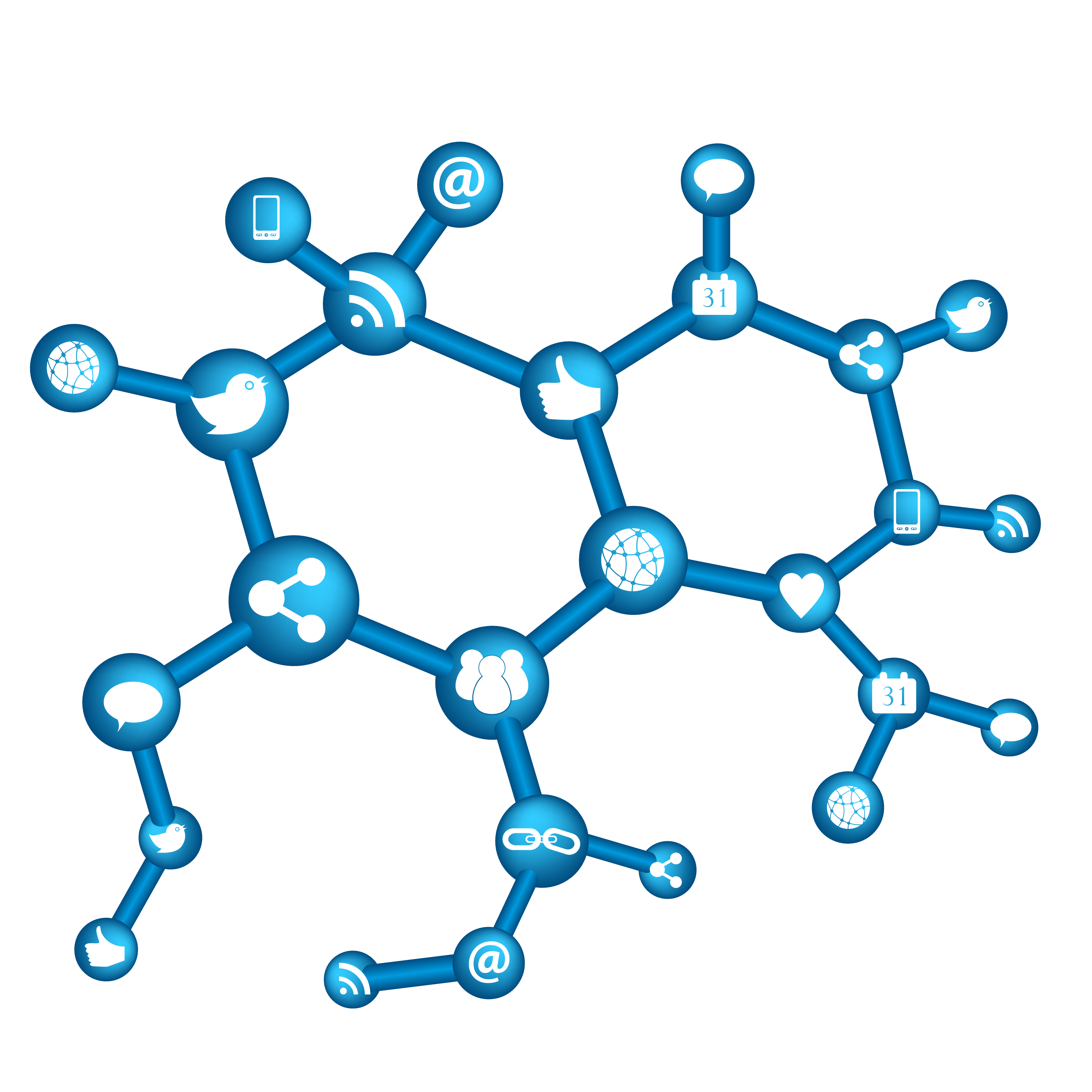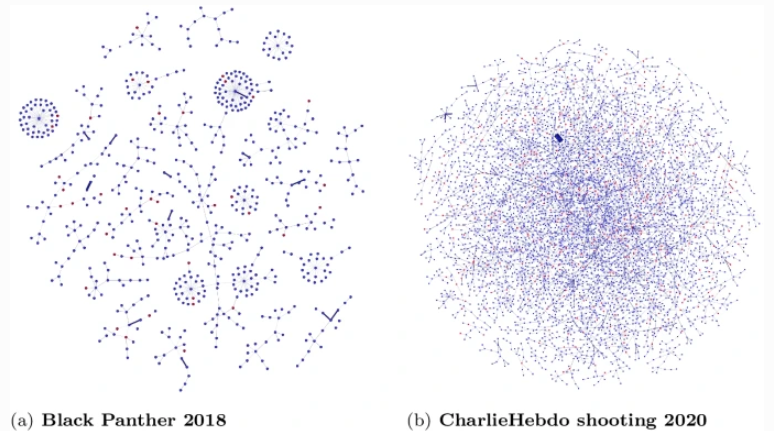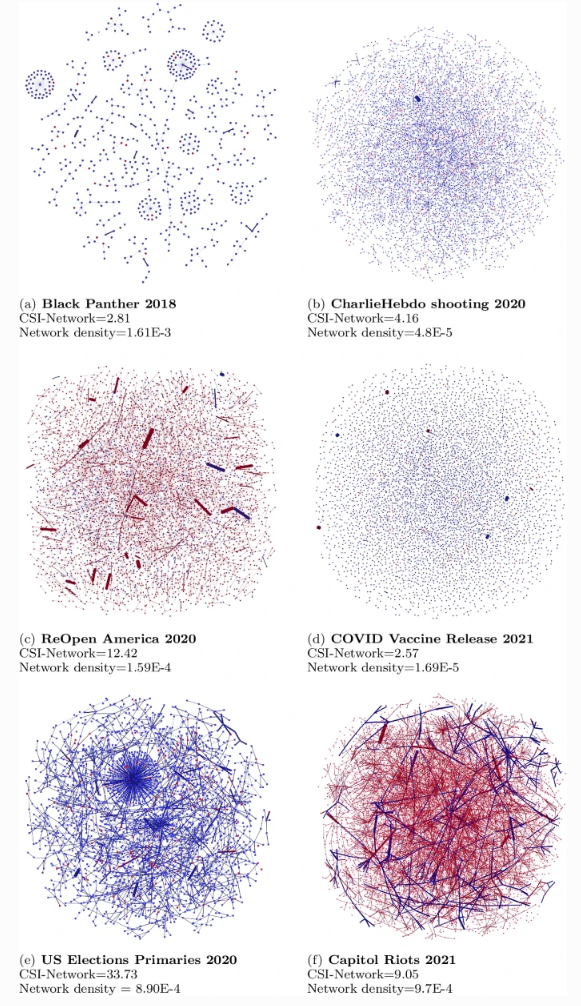
Ranking Synchronized Users on Social Media
By Lynnette Ng
Tags: Coordinated actions, synchronization, ORA
Image credit: Vectorstock
Recent Publication:
Ng, Lynnette H.X., Carley, Kathleen M. A combined synchronization index for evaluating collective action social media. Appl Netw Sci 8, 1 (2023). https://doi.org/10.1007/s41109-022-00526-3
Direct link to paper, published January 3, 2023: https://link.springer.com/article/10.1007/s41109-022-00526-3

Synchronization on Social Media
Social media has facilitated mainstream audiences to have a voice in political and social issues. Using tools available from their mobile phones like Twitter and Facebook, citizens can participate in issues and make their stand. This has been increasingly prevalent over the years that the construction of citizen voices in online discussions has been established as civic values.
However, the multiplicity of voices and opinions on online social networks can be overwhelming. Online users can exhibit characteristics of complex synchronization, echoing each other’s voices and opinions, creating grassroots collective action virtually. When deliberately working together, these grassroots groups can deploy concerted efforts to influence political decisions. When the synchronized dispersion of online narratives elicit strong emotions, such campaigns can be a precursor to offline protests. Because these protests, riots and other forms of violence threaten the safety of our social fabric, early detection of the emergence and intensity of online synchronization is critical.
Currently, several algorithms are developed to measure synchronized user activity on social media. These methods typically involve identifying users that frequently perform similar actions within a specific time window. Actions on social media include: posting with a certain hashtag or posting with a certain URL or @mentioning a certain person. This is a temporal-based windowing approach, which results in link construction between users and their observed user actions. For further detailed explanation on observations of synchronized activity on Twitter, refer to a past blog entry on synchronization.
To better understand which users are synchronizing or coordinating extensively in the event, and how synchronized the event is, we need a system to rank users’ synchronized activities.
However, the current suite of synchronization detection frameworks only analyze users across one action dimension at a time, rather than all action types in a combined form. For example, only the action of posting with a URL is analyzed in the Hong Kong protest case study, and the results are not combined with the coordination observations of other action types (i.e., posting with same hashtag). To solve this, we developed the Combined Synchronized Index for measuring and ranking individual user synchronization.
Combined Synchronization Index (CSI)
The CSI characterizes the extent of synchronization between users, in particular users that tweeted within an event. This is a hierarchical index, which first begins by calculating CSI-UserPair, which quantifies the degree of synchronization between two users. That is, the frequency where two users perform the same social media action within an event.
Given the degree of synchronization a user has with the other users he is paired with, we can aggregate those values to obtain CSI-User for the user. This value helps us understand how much a certain user is synchronizing with the other users in the network. The higher the value, the more often the user performs the same action with other users.
Finally, we aggregate all the user values to calculate a singular value for CSI-Network, which quantifies the collective action within the communications that passed through the event. The higher the CSI-Network value for a certain event, the more there is synchronized community action.

Caption: Flowchart of hierarchical construction of the CSI. Source: original image from the paper
CSI-Network for Six Political Events
Using the algorithm we have developed for CSI-Network, we measure the CSI of six political and social activism events. These events are of huge impact and have the potential to turn into offline protests and riots: COVID Vaccine release, Black Panther movie release, Charlie Hebdo shooting, Capitol Riots, ReOpen America, US Election Primaries. We also analyze the synchronization of users by two groups of user types: bots and humans.
Across all events, we consistently observe that the average CSI-UserPair is highest in the bot-human pair. This means that the synchronization level is extremely high in pairs in which one user is a bot and one user is a human. This indicates that the bots are successful within the network, given that they are designed to engage with humans. This observation indicates that the two types of users are working together to push a common narrative, revealing coordinated activity within the network.
In terms of event-based CSI, we observe that on average the amount of synchronization between human users are more than that of bot users. However, closer examination of individual events reveal differences between the dominant synchronizing user class. Most of the events reveal that humans participate in the synchronization between each other more than bot users except for ReOpen America and COVID Vaccine release events.
Finally, if we observe network synchronization as a whole, we observe that the CSI formulation is able to separate events along a scale to represent user coordination. Visualizing the synchronization network further suggests that higher CSI-Network scores correlate to denser networks, measured by the network density. The order of the networks in accordance to the network density lines up with the CSI-Network scores, revealing that the CSI-Network quantitatively supports the network graph as a measure of synchronicity.

Caption: Level of Synchronization of events. Source: Original image from paper
The dominant color of the network graphs indicates the bot participation within the events, thereby indicating the extent the event is organic. Graphs that are predominantly red means that bots participate in synchronization more than humans, while graphs that are predominantly blue means humans participate in synchronization more. The two network graphs that are predominantly red are the ReOpen America 2020 and Capitol Riots 2021 graphs. Besides the intense online discussion, these two events resulted in offline protests and riots. The presence of synchronized inauthentic behavior within these two events could possibly be a factor to the spillover of the real-world as riots and protests respectively.

Caption: Synchronization of users visualized in a network graph. Source: Original image from paper
In summary, throughout the six events that we studied, there is a dominant user type (i.e. bot or human) that participated in synchronous activities. Human users have a higher CSI-User score, indicating that they have a higher participation of synchronization with original posts than bots. The trend of bot-human pairs having the highest synchronization index across all events is concerning as it reveals that bots do have an effect on human users. That means that the narratives that bots post online are read by human users and can possibly manipulate their opinions.
CSI in ORA
The CSI can be calculated using ORA via the Coordination Analysis Reports. After importing a Twitter network, click on Generate Reports, then click Coordination Analysis Reports. There is also an option to add the generated coordination networks as a Meta-Network to ORA. We can use the CSI to quantify the degree of synchronization within the social network discourse.
This tool serves as a qualitative, network-centric method that abstracts the inter-dimensional perspective of synchronization across key social media post artifacts: @-mentions, hashtags and URLs.
